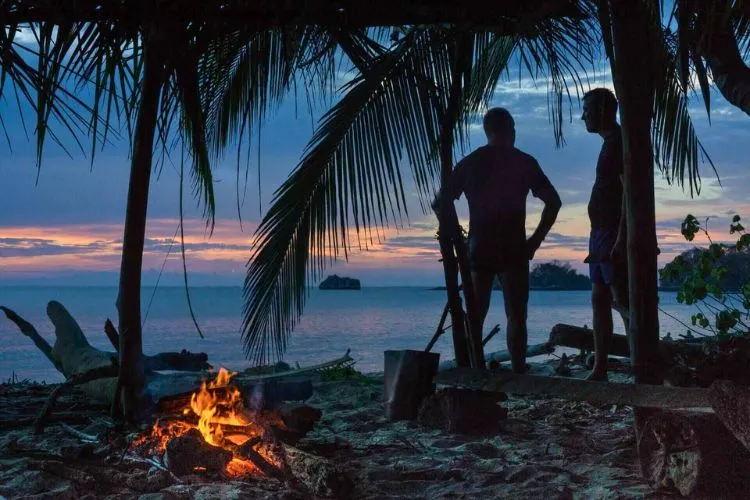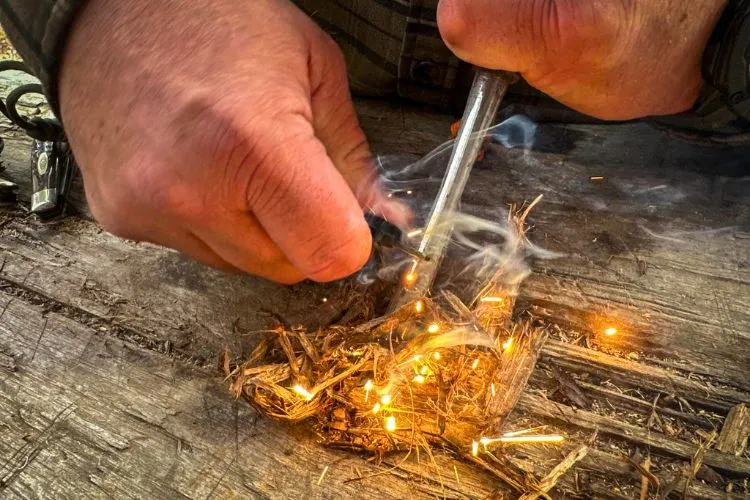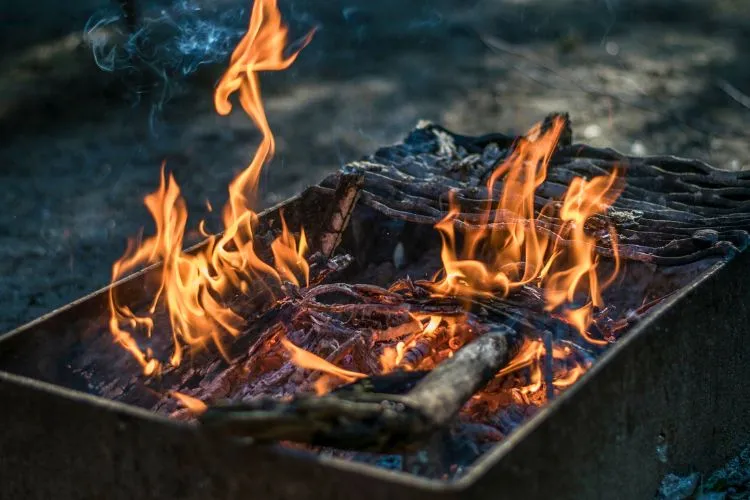In the realm of survival, the ability to make a fire can mean the difference between life and death. It provides warmth, cooks food, purifies water, signals for help, and offers psychological comfort.
Imagine yourself stranded on a deserted island – the skill to ignite a flame becomes not just an advantage, but a necessity.
In this guide, we’ll walk through the steps to master the art of how to make a fire on a deserted island, preparing you for survival in the most dire circumstances.

How To Make A Fire On A Deserted Island?
Before sparks can fly, understanding the preliminary steps is crucial. These ensure a successful, safe, and sustainable fire.
Choosing the Right Location
Selecting an appropriate spot is your first task. Look for a place near enough to your fuel source to minimize effort but far enough from potential wildfire hazards. The location should shield the fire from wind while providing good airflow. Also, consider the fire’s proximity to your shelter and water source for convenience and safety.
Gathering Materials
Gathering the right materials is next. Start with tinder—dry leaves, grass, or bark that ignite easily. Kindling follows, consisting of small sticks and branches that catch fire from the tinder.
Lastly, you need fuel wood, larger pieces that sustain the fire once it’s well-established. A thoughtful collection of these materials ensures your fire starts strong and lasts as needed.
Arranging Your Materials
The arrangement of your materials can determine the success of your fire. The Teepee, Log Cabin, and Lean-to layouts offer different benefits, from quick ignition to prolonged burning. The Teepee layout, for instance, allows air to circulate freely, supporting a strong flame from the start. Understanding and preparing these layouts in advance smooths the path for fire-making.
Techniques for Sparking a Flame
With preparations complete, igniting your fire is the next critical step. Whether employing modern methods or resorting to primitive techniques, each approach requires patience and understanding.

Modern Methods
If you have a lighter or matches, consider yourself fortunate. These tools greatly simplify the ignition process. However, there are challenges, such as dampness or wind, that can render these tools less effective. Understanding the limitations of your fire-starting tools helps in planning and executing a successful fire.
Primitive Methods
Primitive methods, while more challenging, offer a fallback when modern tools are not available. Flint and steel, for instance, is a reliable method that, with the right technique, produces sparks to ignite tinder.
The fire plow and bow drill methods are more labor-intensive but can be effective with practice. The lens method, utilizing glasses or any clear, convex material to focus sunlight, is another option, though dependent on weather conditions.
Pro Tips for Lighting and Sustaining Your Fire
Success in lighting your fire often comes down to patience. A spark nest, created from your finest tinder, cradles the initial flame, allowing you to carefully build up your fire without smothering it. Shielding your fledgling fire from elements like wind and rain is crucial for its development into a stable fire.
Fire Safety on a Deserted Island
With a fire blazing, maintaining control and safety is paramount. An uncontrolled fire can quickly turn an already challenging situation into a disaster.

Ensuring Fire is Controlled
Clear the area around your fire of any flammable material. It is essential never to leave your fire unattended. These steps are simple but critical for preventing the spread of fire and ensuring safety in your camp.
Extinguishing Your Fire
When it’s time to extinguish the fire, doing so thoroughly is crucial. Allow the wood to burn down to ash if possible, then douse with water, ensuring all embers are out. The fire should be cold to the touch before you consider it safe to leave.
Using Your Fire Wisely
A fire on a deserted island serves multiple vital functions—cooking, boiling water, signaling, and providing warmth.

Cooking and Boiling Water
Cooking over an open flame can be a matter of survival. Ensuring your food is thoroughly cooked and boiling water before drinking are critical practices to avoid illness. These tasks require vigilance and care but pay dividends in safety and health.
Signaling for Help
A fire can be a beacon for rescue. During the day, smoke signals can attract attention; at night, the light of a fire can be seen from a distance. Understanding how to produce smoke (adding green vegetation to a fire) or create a bright flame (using dry, resin-rich wood) can increase your chances of being found.
Maintaining Warmth and Comfort
Lastly, your fire serves to keep you warm and comforted. Positioning yourself close (but not too close) allows you to benefit from the fire’s warmth without risk. The fire will also serve as a deterrent to wildlife, offering a sense of security in an unfamiliar environment.
Frequently Asked Questions (fAQs)
How can I make a fire if everything around me is damp or wet?
Finding dry materials can be a challenge in wet conditions. Look for dead branches and foliage under dense trees or inside log cavities. Sometimes, stripping the outer layers of bark or wood reveals dry material underneath.
Is it possible to make fire without any tools?
Yes, it’s possible using techniques like the bow drill or fire plow, though these methods require practice to master. Familiarizing yourself with these techniques beforehand can be invaluable.
What are the most common mistakes people make when trying to start a fire?
Underestimating the amount of tinder and kindling needed is a common error. Another mistake is attempting to ignite too large pieces of wood before the fire is ready.
How can I maximize the visibility of my fire to potential rescuers?
During the day, aim to create smoke by adding green vegetation to your fire. At night, a bright flame, achieved by using dry wood, increases visibility.
Conclusion
Mastering fire-making is a fundamental survival skill that cannot be overstated. From preparation through to ignition and maintenance, each step holds its importance in the overall success of your endeavor.
While modern tools simplify the process, understanding primitive methods ensures you’re never without options. Remember, practice and preparation make all the difference, equipping you with the skills you need to face challenging situations with confidence.
Understanding and applying these basic principles of fire-making can greatly increase your chances of survival and rescue in a desert island scenario. Practice these skills, respect the power of fire, and always ensure you leave no trace of your fire behind to preserve the natural environment.


